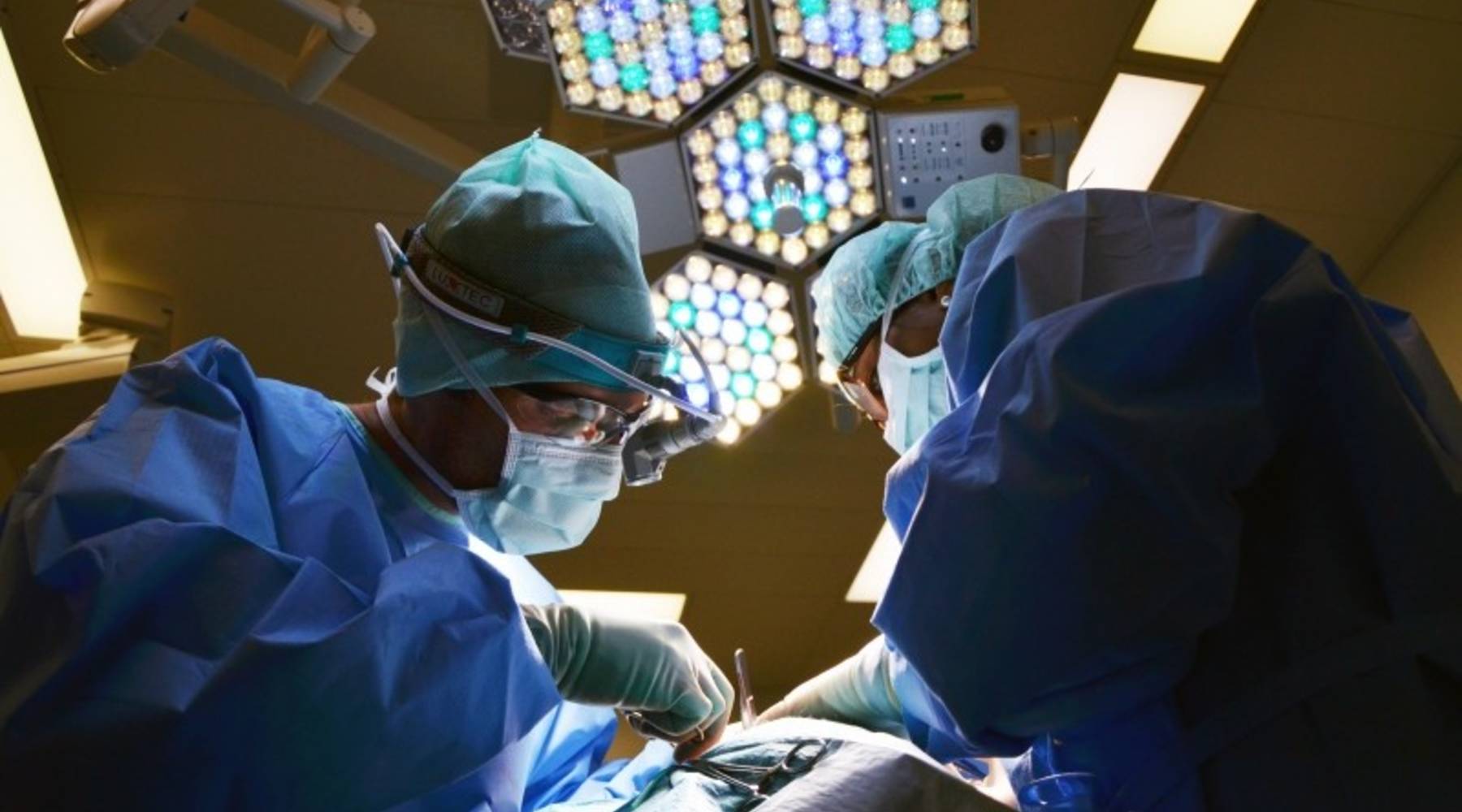How fake blood and medical dummies could save billions
Tess Vigeland: Today, Consumer Reports released new hospital ratings. Several teaching hospitals appeared at the bottom of the list, which was based on infection rates.
Perhaps what those doctors-in-training need is a little more practice on treating patients. That is, fake patients for real problems. From Philadelphia, Mara Zepeda looks at how the medical simulation industry could save the health care industry billions.
Mara Zepeda: In the 1980s, Dr. David Gaba noticed simulation training was standard for some professions. Pilots learned how to fly in fake cockpits. Soldiers practiced how to fight on replicated battlefields. So, why not doctors?
David Gaba: Well, I’ve sometimes been called the father, or the grandfather or the godfather of mannequin-based simulation.
Gaba is associate dean for simulation at Stanford’s Medical School. Thirty years ago, the technology didn’t exist, so Gaba took matters into his own hands. He was like the MacGyver of mannequins — using screwdrivers, balloons and tape. He even wrote his own computer code. Doctors could practice monitoring oxygen levels, inserting breathing tubes or dealing with a collapsed lung on these makeshift mannequins.
Gaba: In the very early years, most people said, “Oh, that’s an interesting toy. I hope you have some fun with that” or something.
But that toy eventually became a product. In 2000, a company called Laerdal introduced the SimMan. They had many of the features that Gaba was trying to create: a pulse, blood pressure and dilating eyes. Back then, a SimMan cost about a quarter million dollars. Now, SimMen are $70,000. As this technology became more affordable, more simulation labs cropped up.
Labs like this simulated emergency room at Drexel University’s College of Nursing. It’s 9 A.M. on a Monday when suddenly:
Man: Excuse me. Excuse me. We just had a bus explode down by the Liberty Bell. It’s an official disaster in the city of Philadelphia. First of all, does anyone have experience with mass casualties?
It’s a chaotic scene as more than a dozen victims of the blast are wheeled in on gurneys. Some are mannequins, like the ones you see in shop windows. Some are SimMen. And then there are pretend patients played by real people, like Chris Eden.
Participant: Can you tell me your name?
Chris Eden: My name is Chris.
Participant: Are you having any pain?
Eden: My head. My head hurts so much.
Medical Simulation from Marketplace on Vimeo.
Drills like these might translate into fewer malpractice suits and shorter hospital stays. That could save the health care system as much as $79 billion each year. That potential for huge savings has accelerated the industry’s growth.
For makers of fake blood and SimMen, business has never been better. Rocky Rockstraw, the assistant dean of simulation at Drexel, is a regular customer.
Rocky Rockstraw: You know, it’s expensive when people start talking about outfitting their schools and their colleges with simulation.
And taxpayers will be footing some of this bill. So how do we know if simulation even works? Robert Furberg analyzes health care technology at Research Triangle Institute.
Robert Furberg: It’s really important to acknowledge that clinical simulation is still very young. There just isn’t enough of an evidence base.
Furberg says it’s a chicken-and-egg problem. He says we won’t know if simulation works unless the government forks over the money to fund and study it, and build that evidence base.
Furberg: I think ultimately there’s an indirect benefit to taxpayers, I mean, if reduction of medical error is associated with a reduction in overall health care costs.
The Department of Health and Human Services will soon announce $10.5 million in new medical simulation grants over the next three years, which will mean more funding for things like this:
Simulation lab technician: What I’m going to do now is I’m going to use much more liquid blood and let it run down the side of his face. And drip on to his clothes, which is actually natural. So we’re OK with that.
In Philadelphia, I’m Mara Zepeda for Marketplace.
There’s a lot happening in the world. Through it all, Marketplace is here for you.
You rely on Marketplace to break down the world’s events and tell you how it affects you in a fact-based, approachable way. We rely on your financial support to keep making that possible.
Your donation today powers the independent journalism that you rely on. For just $5/month, you can help sustain Marketplace so we can keep reporting on the things that matter to you.


















